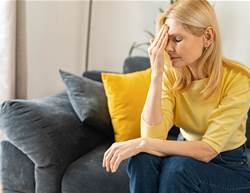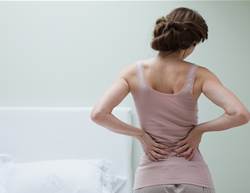Haemorrhoids are one of those bathroom-related issues that feel awkward to mention and uncomfortable to manage and they’re very common in Australia, particularly with age and during or after pregnancy. Many people are unsure what the signs look like, which can delay simple treatments that ease symptoms fast.
Gastroenterologists and colorectal surgeons say the basics matter: know why haemorrhoids form, recognise the red flags and get the right care early.
What are haemorrhoids, exactly?
Haemorrhoids (also called piles) are swollen veins in and around the anal canal and lower rectum. Everyone has hemorrhoidal tissue—it’s part of normal anatomy, but problems arise when that tissue becomes enlarged or inflamed.
There are two main types:
- Internal haemorrhoids develop inside the anal canal or lower rectum.
- External haemorrhoids sit under the skin around the anus and are more likely to feel tender or itchy.
Typical triggers include straining with constipation, prolonged sitting, low-fibre diets, pregnancy and ageing. Managing bowel habits and fibre intake is a first-line step in most Australian guidance.
Causes of haemorrhoids
Not everyone who sits a lot or gets constipated develops haemorrhoids. There’s likely a family tendency for some, and then a mix of day-to-day habits that raise pressure in the veins of the anal canal.
Common risk factors include:
- Straining to pass a bowel motion
- Spending a long time on the toilet—reading or scrolling keeps pressure on the area
- Chronic constipation or diarrhoea
- A low-fibre eating pattern and not enough fluids
- Age-related weakening of the supporting tissues in the anal canal and rectum
- Pregnancy and the postnatal period—increased pressure and hormone changes play a role
- Regular heavy lifting at work, in the gym or around the house
Other contributors can include prolonged sitting, being less active, persistent coughing and medicines that slow the bowels. If any of these ring true, small changes, more fibre and water, moving daily, limiting toilet time to a few minutes and avoiding straining, can lower the chances of a flare.
Common symptoms of haemorrhoids
Signs vary depending on whether the problem is external or internal. Here’s what to look for.
External haemorrhoids may cause:
- Itching around the anus
- One or more hard tender lumps near the anal opening
- A dull ache or pain that worsens with sitting
Internal haemorrhoids may cause:
- Bright red bleeding from the rectum—on the toilet paper, in the bowl or streaked on the stool
- Prolapse—a lump that slips down through the anus, sometimes felt after a bowel motion
Haemorrhoids usually do not cause sharp pain during a bowel motion. If a prolapsed haemorrhoid does not slip back in, swelling and soreness can develop and may need assessment by a clinician. Seek urgent care if bleeding is heavy, you feel faint or you are unsure the bleeding is from haemorrhoids.
The best ways to get rid of haemorrhoids
Simple at-home care often settles symptoms and helps prevent flare-ups. Start by easing the strain on bowel movements. Lift fibre with wholegrains, fruit, veg and legumes, drink enough water, stay active and go when you feel the urge rather than delaying. Softer stools move more easily and cause less irritation. Try not to sit for long stretches. Stand, stretch or take a short walk each hour if you can, and keep time on the toilet brief.
Warm sitz baths soothe swelling and itch. Sit in comfortably warm water for 15 to 20 minutes once or twice a day for a week or two. Use a bath with 7 to 10 cm of water or a plastic sitz basin that fits over the toilet. Pat the area dry gently, avoid perfumed soaps and opt for breathable cotton underwear to reduce friction.
Short courses of pharmacy treatments can help. Over-the-counter creams or ointments with a mild anti-inflammatory, local anaesthetic or protective barrier can ease discomfort, and a simple stool softener or fibre supplement may help if constipation is an issue. Ask a pharmacist about options suited to you, and use them as directed for a limited time.
When to see a doctor about your haemorrhoids
If symptoms last longer than a week or you are unsure what is happening, book a review with your GP. Seek urgent care sooner if you have heavy bleeding, severe pain, fever, dizziness or a prolapsed lump that will not go back in.
Your GP will usually start with self-care and short courses of pharmacy treatments. If symptoms persist, you may be referred to a specialist to discuss these options:
- Rubber band ligation: a small band is placed to cut off blood flow to a bleeding or prolapsed internal haemorrhoid so it shrivels and drops off
- Sclerotherapy: a solution is injected into an internal haemorrhoid to form scar tissue, cutting off blood supply and shrinking it
- Infrared photocoagulation: focused light creates scar tissue on an internal haemorrhoid to reduce its blood supply and size
- Electrocoagulation: a gentle electrical current forms scar tissue that shrinks an internal haemorrhoid
- Surgical removal: considered for large external haemorrhoids or prolapsing internal haemorrhoids when other measures are not effective
New rectal bleeding should be assessed to rule out other causes such as fissures, polyps, inflammatory disease or bowel cancer, especially if you are over 45 or have red flags like a change in bowel habit, unexplained weight loss or iron deficiency.










